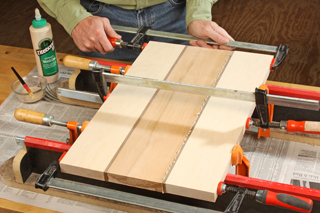
I use two-part epoxy (either LePage® or West System®) quite a bit for joining things together on my woodworking projects, opposed to using the standard yellow “carpenter’s glue.” I think my reasons for using the two-part epoxy is because I’ve seen the carpenter’s glue dry out over time and it doesn’t seem to hold up well in damp environments — particularly marine applications. Am I right or wrong to be using two-part epoxy vs. carpenter’s glue? What are the pros and cons between the two adhesives? – Jack Mellor
Chris Marshall: The folks at Franklin International, makers of Titebond® glues, would probably beg to differ on the issue of the integrity of modern “carpenter’s” glues and their ability to hold up in damp conditions. In fact, Titebond II is formulated to be water-resistant and Titebond III is actually waterproof. PVA (polyvinyl acetate) glues have been around since the 1950s, doing daily service on woodworking projects — so I think the longevity of glue bond strength need not be a concern. Still, epoxy has a loyal following among boat-builders, and it is a much better gap filler than the PVA options when that solution is necessary. I think provided you are using fresh adhesive formulated for water resistance or immersion, you could be fine using either epoxy or today’s one-part PVA or polymer-based wood glues for projects exposed to some degree of moisture.
Tim Inman: I use epoxies myself. Other than the expense and inconvenience of using them, I find them superior in most applications. They are probably “overkill” in most circumstances. I restore furniture for a living. I see hide glue lines that are in fine shape after a century or more quite often. Still, “better living through chemistry,” as they say. Epoxies definitely have a place in the arsenal, but so do all the other “weapons” available to us.






